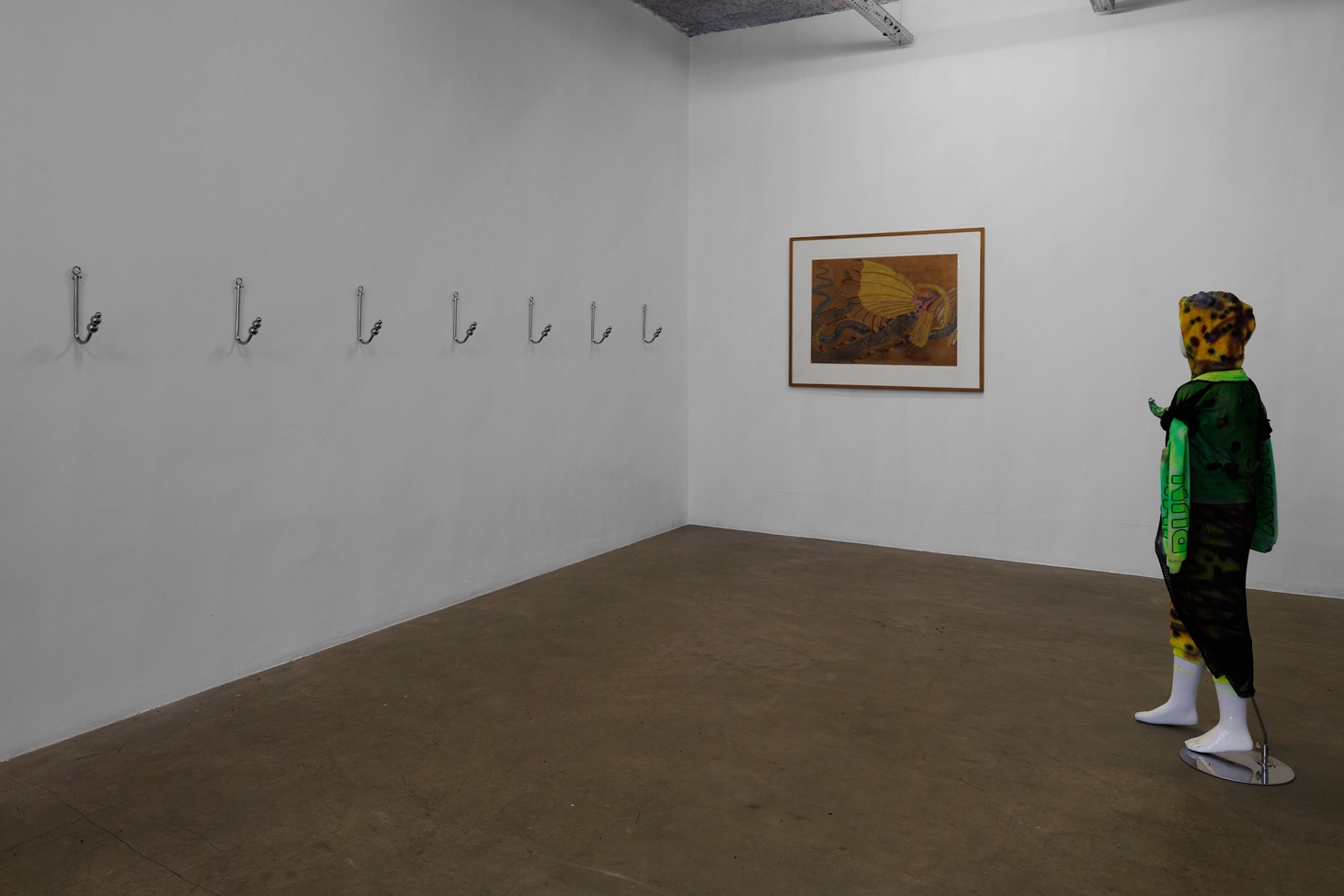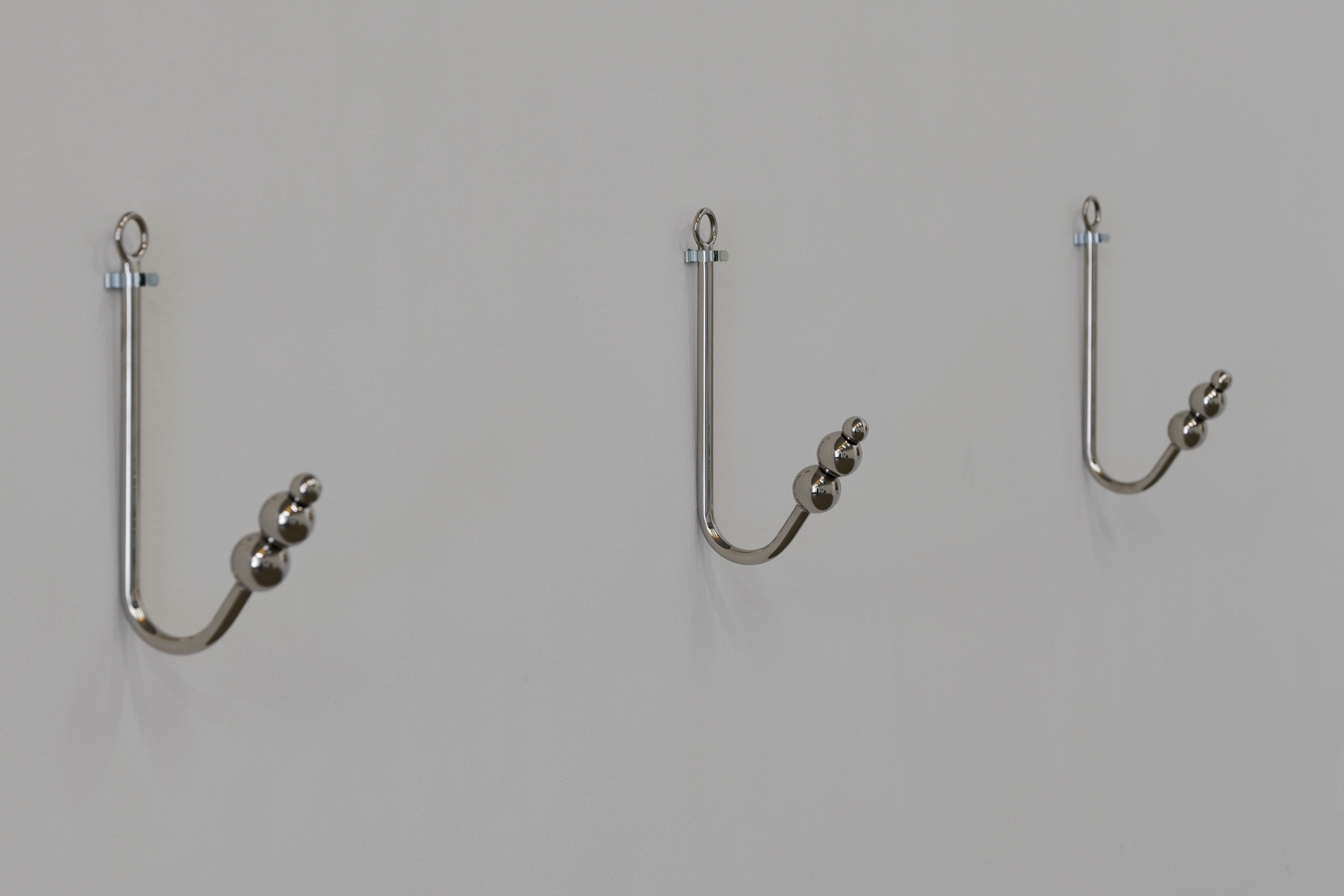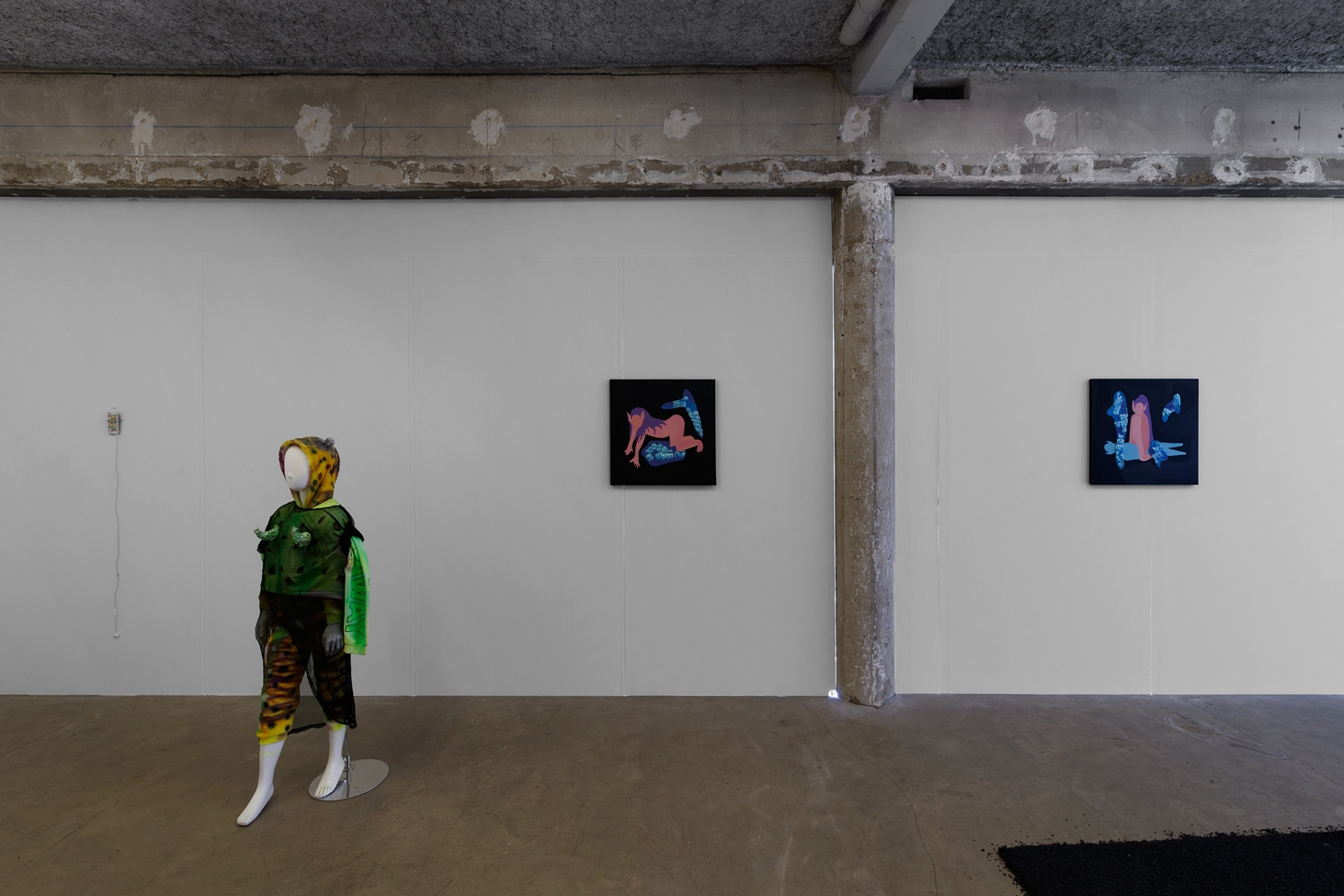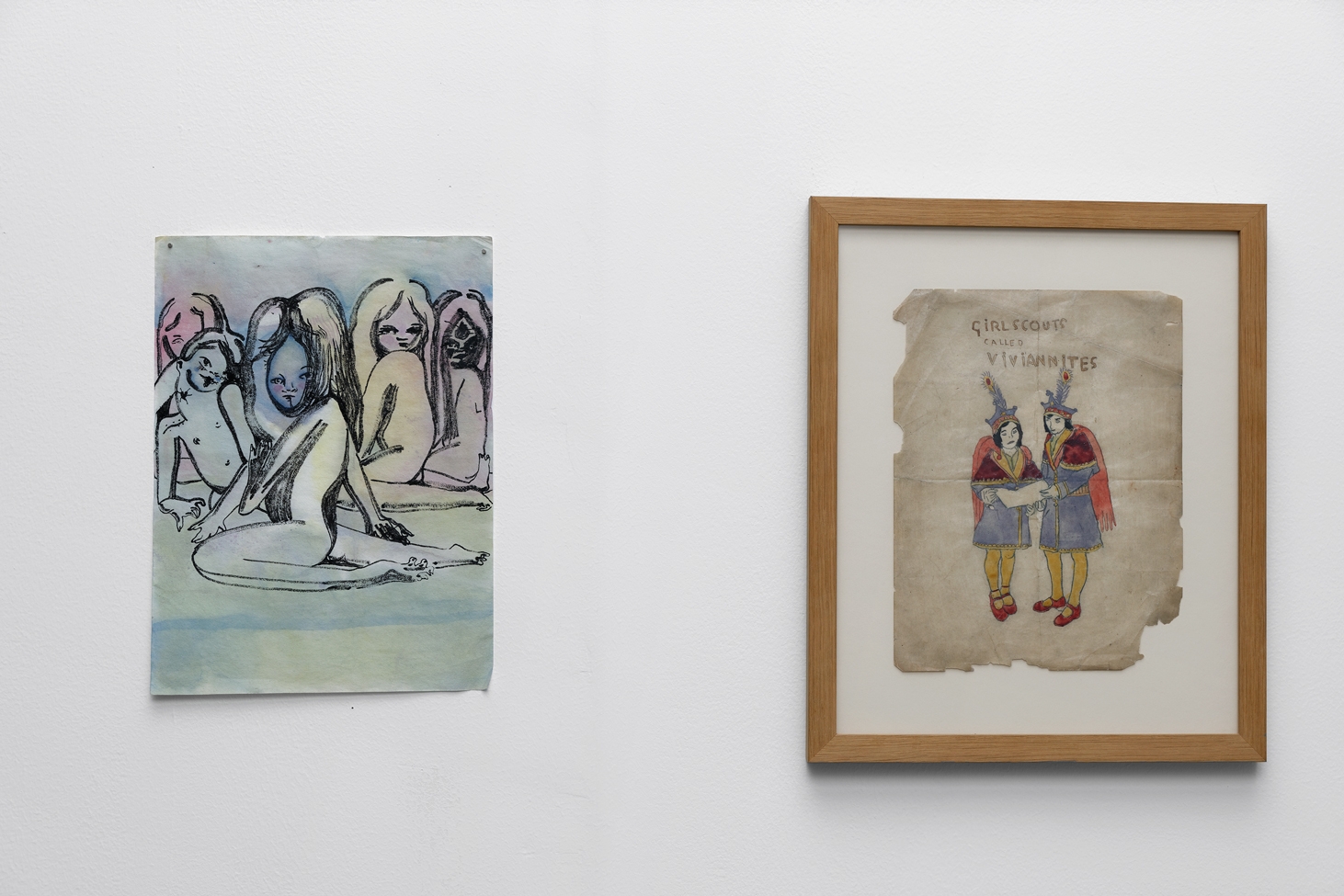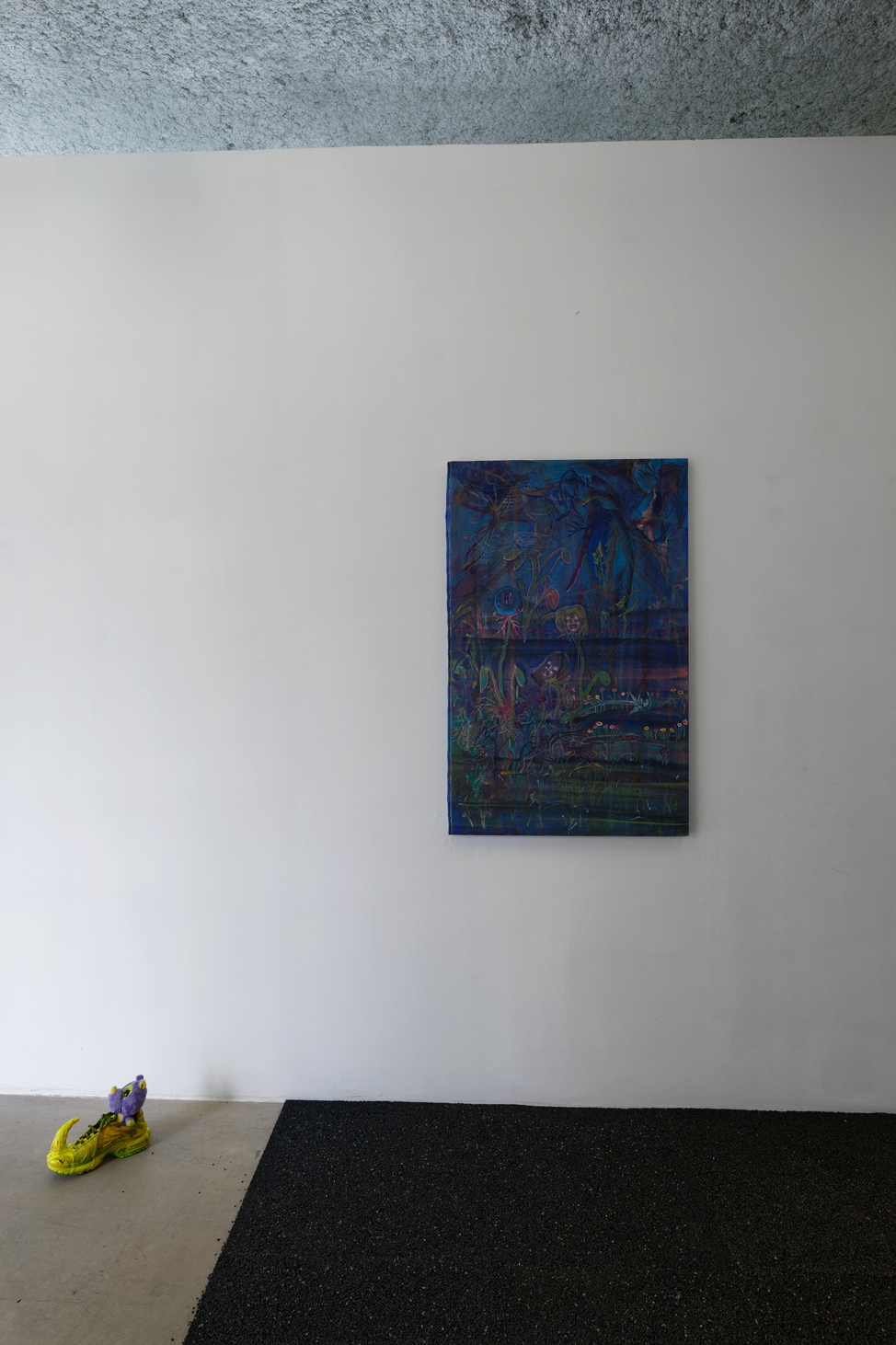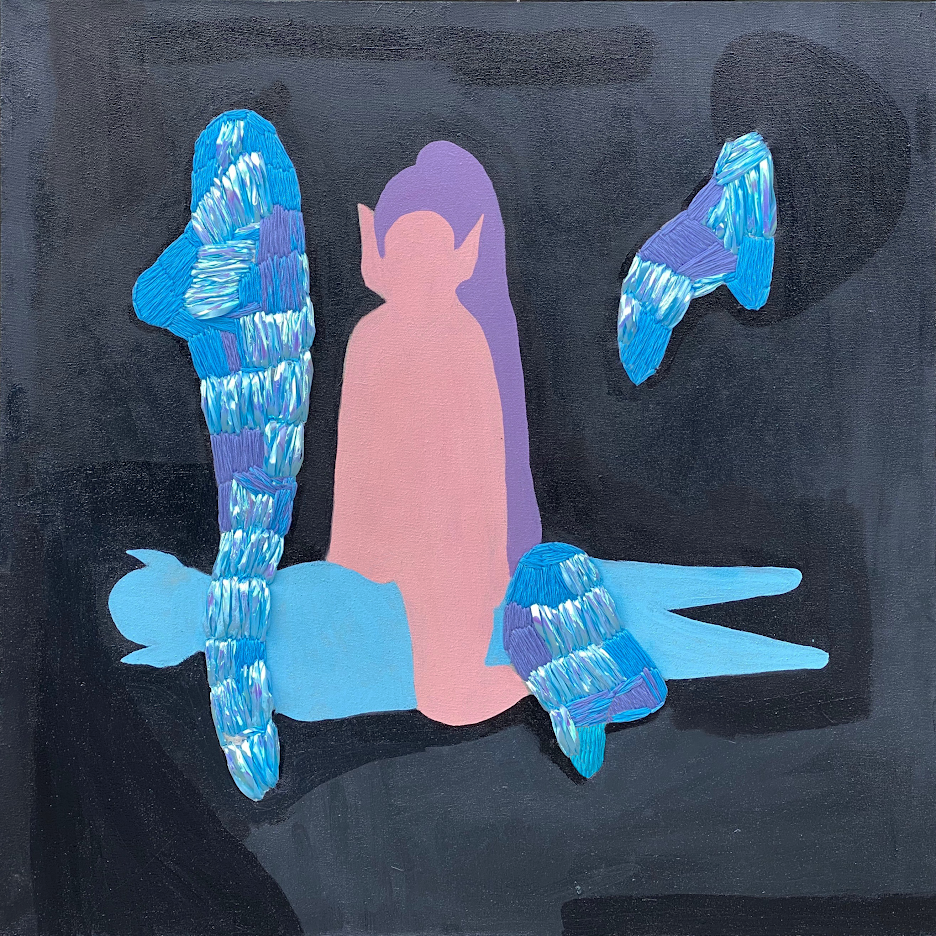Kevin Blinderman, Henry Darger, Thomas Liu le Lann, Alban Diaz, Regina Demina, Paul Alexande Islas, Paul Kindersley, Salome Jokhadze
Henry Darger (1892–1973) wrote on the title page of the first volume of The Story of the Vivian Girls in the Realms of the Unreal : “By Henry Joseph Darger. The author of a gripping tale.”
And gripping his written work most certainly is. Sprawling over 1,500 typewritten pages and covering several volumes, Henry Darger’s epic narrative tells the story of seven Vivian sisters and child slaves subject to violence perpetrated by adults, the sadistic Glandelinians. The artist also conjures up illustrations that quickly take on a life of their own. Battle scenes and massacres featuring scantily dressed young girls with penises are but a part of his prolific visual production. Yet it is those scenes that have caught the attention of the artist’s detractors and admirers alike, as they bear witness to unheard-of violence and unusual ambiguity. Why do these little girls have male sexual organs?
The mystery remains, spawning endless conjectures: Darger, the “Poussin of pedophilia”; Darger the sadist; Darger, a sly old devil. One thing is certain: Henry Darger had had a difficult, lonely childhood which he then sought to reconstruct and reclaim through his fiction. Such an avalanche of wild speculation obscures the proto-pop dimension of his oeuvre. Year after year, Henry Darger collected press cuttings and advertisements representing little girls (including those reported missing), in addition to images from coloring books and children’s literature. This popular imagery lends a certain mawkishness to the depicted girls. Darger registers this disturbing convention typical of the era, even as he subverts it by rendering it more complex. By endowing his young protagonists with male organs, he unwittingly dismantles the enterprise of gender construction peddled in the press and children’s books. In a similar vein, he retrospectively instills gender consciousness that appeals to many contemporary artists, such as Paul Kindersley. The exhibition Abbieannian Novlangue originates from this observation and is intended as the first in a series devoted to Henry Darger’s legacy in contemporary art, and by extension, in the field of music, with Regina Demina.
Designed as the second part of an evolving traveling exhibition, Abbiennian Novlangue brings together eight emerging artists, most of whom were featured in the first iteration (Henry Darger Summer Camp, Arles, May 2019). They are aged between 22 and 34 and reside mainly in Europe, with the exception of Salome Jokhadze, a young Georgian artist, whose painting represents the strange, diminutive silhouette of a fabulous mystical girl saint. Only a mere handful of works adopt a narrative device “à la Darger”: an outdoor or indoor scene featuring androgynous and/or conventional female figures. Group scenes are absent from the exhibition, which seeks instead to underscore the relationship of young artists to the universe of childhood, whether made manifest through the processes of infantilization and demarcation in urban space—as in the case of Alban Diaz—or by reference to Andersen’s tales, such as The Little Mermaid , combined with Internet culture and Selfish, as in the case of Matthias Garcia.
This exhibition thus raises the inevitable question of the material conditions of the production of Darger’s work. Nourished by the literary culture of his time (including Frank Baum’s The Wizard of Oz, published in 1900), Darger also assembled a collection of children’s and teenage magazines as source material for his figures, which he would transfer and transpose onto his drawings. What would his work have been like in the 1990s or today, when popular imagery informs one’s relationships with oneself and others? As Kevin Blinderman puts it, if “Henry Darger were here, he would make Nightcore,” a musical sub-genre broadcast and accessed mainly via YouTube. This type of music is characterized by an accelerating tempo as well as visual affinity with manga, which are dominated by hypersexual, stylized female bodies bordering on juvenile grotesque. Fueled by a group of anonymous fans, Nightcore is a raw, post-pop practice where a wide range of references takes us into extreme territories that may be likened, to some extent, to Darger’s work: illustrations, DIY, the sexualization of female children, anonymity, and reinterpretation of popular culture. The violence at work in The Story of the Vivian Girls in the Realms of the Unreal , an epic for adult audiences with the allure of a children’s book, leads Thomas Liu Le Lann to manipulate a cold aesthetic, playing with and deconstructing the codes of masculinity (hypermasculinity and soft masculinity) and so-called deviant sexuality. Engaged in dismantling the dominant heroic model, Le Lann responds to the principle of transformation at the heart of Darger’s Benglin-populated work. Paul-Alexandre Islas likewise grabs hold of this idea of transformation with an undisguised facility for color and for customizing and personalizing uniforms that tend toward a DIY fantasy. For while the uniform is at home in the work of Darger (who was fascinated with boy scouts), Islas uses it to ground his story in reality consolidated through his personal fictions.
— Julia Marchand / Extramentale
♡
Henry Darger (1892-1973) écrit en première page du volume I de The Story of the Vivian Girls in the Realms of the Unreal : « Par Henry Joseph Darger. L’auteur d’une histoire palpitante ».
Palpitante, son œuvre écrite l’est assurément. Sur quinze mille pages tapées à la machine et réparties en plusieurs volumes, Henry Darger déploie le récit épique des sept sœurs Vivian et des enfants-esclaves en proie aux violences des adultes, les sadiques Glandeliniens. Il conçoit également des illustrations qui existent très vite de manière autonome. Les scènes de bataille et de massacre où l’on voit apparaître les jeunes filles dénudées munies d’un pénis n’occupent qu’une partie de l’ensemble de sa production visuelle. C’est pourtant celles qui ont retenu l’attention des détracteurs et des admirateurs de l’artiste puisqu’elles témoignent d’une violence inouïe et d’une ambiguïté sans pareil. Pourquoi ces jeunes filles sont-elles dotées d’un organe sexuel masculin?
Le mystère demeure, et avec lui s’envolent les élucubrations : Darger “Poussin de la pédophilie”, Darger sadique, Darger vieux vicelard. Une chose est sûre, Henry Darger a eu une enfance difficile, isolée qu’il cherche à reconstruire et consolider par le biais de ses fictions.
Face à une telle avalanche de spéculations, on oblitère la dimension proto-pop de son oeuvre. Henry Darger amasse, années après années des coupures de presse représentant des petites filles (disparues, notamment) et des publicités, en complément des cahiers de coloriage et de la littérature enfantine. Cette imagerie grand public octroie une mièvrerie aux fillettes représentées. Darger réceptionne cette convention dérangeante propre à son époque tout comme il la détourne en la complexifiant. En dotant d’organes masculins ces jeunes protagonistes, il démonte, à son insu, l’entreprise de construction de genre véhiculée par la presse et les livres pour enfant. De même, il insuffle, a posteriori, une conscience du genre qui interpelle bon nombre d’artistes contemporains, tel Paul Kindersley. L’exposition Abbieannian Novlangue est née de cette observation et entend poursuivre la série d’expositions consacrées à l’héritage de Henry Darger dans l’art contemporain, et par extension, dans le domaine musical, avec Regina Demina.
Pensée comme le deuxième volet d’une exposition itinérante et évolutive, Abbiennian Novlangue réunit huit artistes émergent.e.s, dont la plupart ont été précédemment exposé.e.s lors du premier volet (Henry Darger Summer Camp, Extramentale Arles, mai 2019). Ils/elles ont entre 22 et 34 ans et résident principalement en Europe, à l’exception de Salome Jokhadze, jeune artiste Géorgienne, dont l’oeuvre peinte arbore l’étrange silhouette d’une petite sainte mystique et fantastique. Rares sont les œuvres qui empruntent un dispositif narratif “à la Darger “: une scène d’extérieur ou d’intérieur dans laquelle se déploie un ensemble de silhouettes féminines androgynes et/ou convenues. Les scènes de groupes sont absentes de l’exposition qui cherche davantage à souligner le rapport des jeunes artistes aux mondes de l’enfance qu’ils soient rendus manifestes par le biais des processus d’infantilisation et de démarcation dans l’espace urbain - soulevé par Alban Diaz - ou via les références aux contes d’Andersen, telle La Petite Sirène, entremêlées à la culture internet et du “Selfish”, de Matthias Garcia. Car, cette exposition soulève la question des conditions matérielles de production de l’œuvre de Darger. Nourri par la culture livresque de son époque (dont Le Magicien d’Oz de Frank Baum, publié en 1900), il a également regroupé un ensemble de magazines destinés à l’enfance et à l’adolescence pour choisir des figures qu’il décalque et transpose sur ses dessins. Comment aurait-il opéré dans les années 90 et aujourd’hui où l’imagerie populaire féconde d’autres rapports à soi et aux autres ? Pour Kevin Blinderman, si “Henry Darger était ici, il ferait du NightCore”, un sous-genre musical principalement diffusé et consulté sur Youtube. Ce style est caractérisé par une accélération de la mélodie et son affinité visuelle avec les Manga, où règne une hypersexualisation des corps féminins standardisés frôlant avec un grotesque juvénile. Alimenté par un groupe de fans anonymes, le NightCore est une pratique brute et post-pop dont les évocations multiples nous entraînent vers les territoires extrêmes que l’on peut rattacher, dans une certaine mesure, à l’œuvre de Darger : illustration, DIY, sexualisation de la fillette, anonymat et réinterprétation de la culture populaire. Pour Thomas Liu Le Lann, la violence à l’œuvre dans cette épopée pour adultes aux allures de livres pour enfant, que The Story of the Vivian Girls in the Realms of the Unreal, le conduit à manipuler les codes d’une esthétique froide où se jouent et se déjouent les codes de la masculinité (hypermasculinité et masculinité douce) et de la sexualité dite déviante. Investi dans la déconstruction de ce modèle héroïque dominant, il répond au principe de transformation au cœur de l’œuvre de Darger, peuplé de Benglins. Paul-Alexandre Islas s’en empare également, avec une facilité non dissimulée pour la couleur et la customisation d’uniforme qui tend, après la personnalisation, vers un fantastique DIY. Si l’uniforme est de mise dans l’œuvre de Darger (fasciné par ceux des scouts), il l’est aussi pour Islas qui cherche, par celui-ci, à situer son intrigue dans un réel consolidé par ses fictions personnelles.
— Julia Marchand / Extramentale


